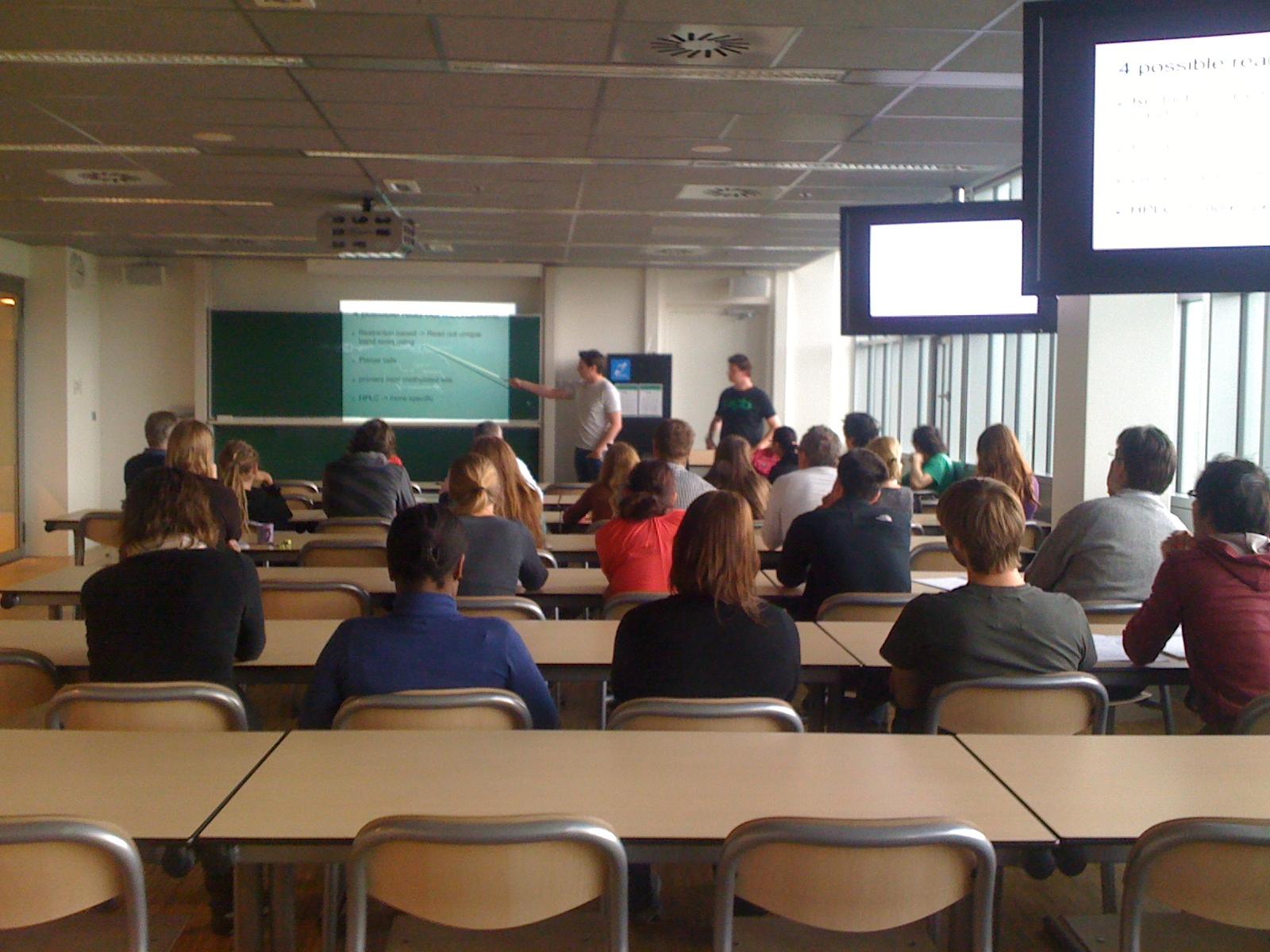Team:Amsterdam/practices/results
From 2012.igem.org
(Difference between revisions)
| Line 12: | Line 12: | ||
<h4>Experts in biotechnology (Refining molecular mechanism)</h4> | <h4>Experts in biotechnology (Refining molecular mechanism)</h4> | ||
| - | [[File:Amsterdam_human_practices_1.jpg| | + | [[File:Amsterdam_human_practices_1.jpg|450px|right|border]] |
In the first month of our project we organized presentations at both universities (UvA and VU) and invited scientists from the departments of Molecular Cell Biology and the Swammerdam Institute for Life Sciences (SILS). During these presentations we explained how we wanted to realize our project, the Cellular Logbook. Based on all the useful feedback, we were able to refine the molecular mechanisms of the Cellular Logbook. | In the first month of our project we organized presentations at both universities (UvA and VU) and invited scientists from the departments of Molecular Cell Biology and the Swammerdam Institute for Life Sciences (SILS). During these presentations we explained how we wanted to realize our project, the Cellular Logbook. Based on all the useful feedback, we were able to refine the molecular mechanisms of the Cellular Logbook. | ||
| Line 57: | Line 57: | ||
Ron van der Oost is a toxicologist at a Dutch water company, named Waternet. He is specialized in research on risks, effects and behavior of emerging substances in the water cycle. Waternet is the only company in the Netherlands that focuses on the whole water cycle. Waternet is responsible for cleaning wastewater, making water drinkable and monitor and clean surface water. | Ron van der Oost is a toxicologist at a Dutch water company, named Waternet. He is specialized in research on risks, effects and behavior of emerging substances in the water cycle. Waternet is the only company in the Netherlands that focuses on the whole water cycle. Waternet is responsible for cleaning wastewater, making water drinkable and monitor and clean surface water. | ||
| - | [[File:Amsterdam_human_practices_2.jpg| | + | [[File:Amsterdam_human_practices_2.jpg|450px|right|border]] |
Ron van der Oost was really interested in our multi-sensor idea. Right now they use 20 different sensors for different groups of compounds. These bioassays are not optimal. They are really expensive and it is hard to normalize the data (at what point does a certain concentration become toxic?). Therefore it is often necessary to get a toxicologist to look at the data from bioassays, what makes it even more expensive. He pointed out some crucial issues, regarding the potential use of our Cellular Logbook: | Ron van der Oost was really interested in our multi-sensor idea. Right now they use 20 different sensors for different groups of compounds. These bioassays are not optimal. They are really expensive and it is hard to normalize the data (at what point does a certain concentration become toxic?). Therefore it is often necessary to get a toxicologist to look at the data from bioassays, what makes it even more expensive. He pointed out some crucial issues, regarding the potential use of our Cellular Logbook: | ||
Revision as of 10:36, 26 September 2012
 "
"







